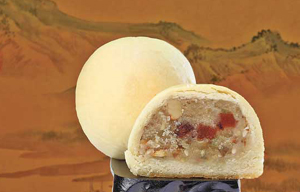Tibetans' caterpillar fungus fortune nearing exhaustion
The caterpillar fungus, a cash cow for Tibetans, may die out in China in two decades, as a result of overexploitation on the Qinghai-Tibet Plateau, experts have warned.
When the harvest season ended this summer, many unlucky diggers found their fungus incomes were not even enough to cover their costs -- mainly a fee that varied from 5,000 up to 50,000 yuan (817 to 8,170 U.S. dollars) levied by local authorities according to the acreage where they were allowed to dig.
The yellowish caterpillar fungus is about two inches long and weighs less than 1 gram, but a tiny stalk sells for about the same price as gold even in the nearest town from the plateau where it grows.
"Even the luckiest diggers collect no more than 20 stalks a day," said Karma Daqung, a fungus expert and former manager of a state-owned farm in Yushu Prefecture of northwest China's Qinghai Province.
Ten years ago, the plateau was rich in this "worm grass" and diggers could harvest more than 5 kilograms a day, he said.
"Back then, a seven-member family could earn 400,000 yuan in the harvest season, though fungus dealers paid them only 2,000 yuan per kilo."
Today, the fungus price has soared as high as 300,000 yuan per kilo and large crowds of avid diggers from Yushu and other Tibetan communities in western China flood in every summer.
The worm grass, known in China as "winter-worm summer-grass," is not really a plant. It forms when a parasitic fungus hijacks and then feeds off the bodies of ghost moth larvae that have burrowed into the alpine soil 3,000 to 5,000 meters above sea level. It then pushes the remains of their bodies to the surface so the fungus can spread its spores.
The mummified moths are a traditional Tibetan cure-all that is believed to help fight cancer and the aging process and boost the immune system.
As Tibetan medical ingredients are much coveted in China and abroad, worm grass has become a lucrative commodity. Most residents, including children and elderly, join the rush for worm grass every year. Even schools are closed in May and June so that students and teachers can join in the harvesting.
The fungus rush has also prolonged the normal harvesting period from 60 days to more than 70 days, causing severe damage to the growth cycle of the fungus, said Li Yuling, a botanist who concentrates on caterpillar fungus studies at Qinghai Academy of Animal Science and Veterinary Medicine.
Despite the high profits, overexploitation has reduced fungus output and degraded the plateau ecology.
Research by Li's academy shows average fungus output reported in China's 12 major fungus production bases in Tibet, Qinghai and Sichuan is less than 10 percent of the 1980 volume.
"In the most-exploited regions, fungus output has shrunk to 2 percent of the 1980 figure," said Li.
In some parts of Qinghai, where the bulk of China's caterpillar fungus is grown, fungus reserves are only 3 to 10 percent of the 1980 volume, she said.
In Qinghai's Yushu, Golog and Hainan prefectures, the average number of moth larvae per square meter halved from 2005 to 2012, Li said.
"This has caused a sharp decline in fungus output and may eventually cause fungus reserves to be exhausted in 20 years," she said.
Once the reserves become extinct, she said it would be difficult to restore the precious worm grass because China is yet to build reserves of moth larvae and the fungus species.
"It's essential to set up a nature reserve to protect soil, worms and fungus before artificial growing of worm grass becomes possible."
To protect the magical herb and ensure its sustainable growth is essential in protecting the plateau ecology and increase local farmers' income, said Li.
























